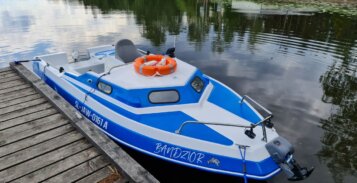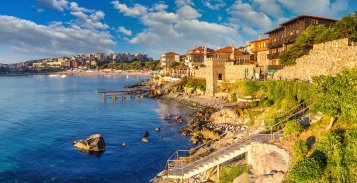
„I used Antifouling Sea-Line two seasons ago (in 2014). Before the beginning of the 2015 season, I painted the wooden rudder, ,,newly secured” with Le Tenkinios, a natural oil varnish, with Antifouling Sea-Line (in two layers). The remaining paint was used on the hulk and – to my surprise – I did not find any difference in the quality of antifouling security compared to the one made the year before. Similarly surprised was the boatswain who every single day launches yachts at my marina. He stated that many yachts were covered with shells but he did not find anything at my Ka-Haar. Making preparations for wintering, I cleaned the whole yacht therefore in the pictures there are white damp patches visible, the remains of the gelcoat cleaner.
Antifouling Sea-Line versus fouling at Zalew Szczeciński, the score is 2:0.
The third round „Antifouling Sea-Line versus fouling at Zalew Szczeciński” begins in just three months. My plan of the winter renovation works at the bottom includes securing minor mechanical damages, from the bottom and the rudder (max. 10 cm2), with antifouling paint. Instead of working hard at the renovation of antifouling surface, I will devote my winter evenings to reminiscing this year’s cruises.”
October 2015, text and pictures by Piotr6 (www.sailforum.pl)

Désolé, cet article est seulement disponible en Polonais et Anglais Américain.

Opinion of our distributor from Bulgaria, Nicolai from Watersports Equipment – Varna, who works with Sea-Line for 5 years. « Watersports […]

Opinion of our distributor from Switzerland, Jürg from ANWANDER – Näfels. ‘My name is Jürg Iselin from ANWANDER in Switzerland. […]

Opinion of our distributor from Gibraltar, Gaynor from GIBYACHTS – Gibraltar. « Wanted to take few moments to talk to you […]
Sea-Line yacht paints are designed for painting the surface of boats and yachts made of various materials, e.g. laminate, wood or steel. We do not have a certificate of the National Institute of Hygiene, which would allow the use of yacht paint to paint the tank with drinking water.
Do not add more hardener, because after the base has cured, the remaining hardener will react with subsequent layers, which will be applied to the surface and cause defects. For the product to work properly, please follow the proportions given by the manufacturer.

Le produit destiné au remplissage des lacunes et à la liquidation des inégalités résultant des dommages ou des inégalités qui […]

La protection de la surface du bateau contre l’influence destructrice de l’osmose et de la corrosion dans des conditions difficiles

La protection contre l’eau et contre l’influence néfaste des rayons UV

La protection du fond du bateau contre l’encrassement par les algues et contre les coquillages. La protection contre l’eau

Une élimination efficace des fissures, le rafraîchissement de la couleur et du brillant du gel coat ou du vernis

Préparations spéciales pour le nettoyage et la remise en vigueur

Laminage, collage et de remplissage des fissures dans gelcoat

Beaucoup de produits utiles pour les travaux de construction d’un bateau